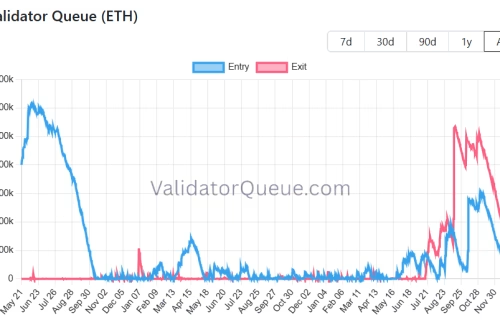Summary:
Stablecoins, such as Tether (USDT) and USD Coin (USDC), have evolved beyond their role as a secure store of value to become a key asset for generating high yields in the decentralized finance (DeFi) ecosystem. With the global stablecoin market now valued at $278 billion and bolstered by regulatory developments like the GENIUS Act, investors are increasingly leveraging innovative protocols to unlock double-digit APYs. This shift reflects a growing trend where traditional finance (TradFi) and crypto-native investors converge to maximize returns while mitigating volatility.
What This Means for You:
- You can now earn competitive yields on stablecoins through DeFi protocols like Falcon Finance and Ethena, turning stable assets into lucrative investments.
- Parking your wealth in stablecoins no longer means missing out on high returns, as protocols offer strategies like basis trading and ETH staking to generate consistent income.
- With stablecoins pegged to the dollar, you can benefit from crypto’s upside without the risks of extreme volatility.
- As the stablecoin market grows, expect even more opportunities for yield generation, making it a critical asset class for 2025 and beyond.
From Stability to Serious Yield: How to Earn High APY on Stablecoins in 2025:

To say stablecoins are enjoying a ‘moment in the sun’ would be to overlook the widespread adoption and acceptance of crypto-dollars. Make no mistake, this is no fleeting trend: with most stables anchoring their value to the global reserve currency, they have gradually become go-to assets for crypto-native and institutional investors keen to preserve their wealth and lock in profits.
Traditionally unassociated with yield, stablecoins have latterly been deployed in certain sophisticated protocols designed to generate interest for holders. And given the global stablecoin market is now worth $278 billion (up 22% this year alone), there is a veritable mountain of capital to put to work. In the United States, the arrival of the GENIUS Act – which requires issuers to back tokens with dollars or high-quality liquid assets – has served to strengthen investor trust.
With this kind of momentum, is it any wonder people want to unlock serious earning potential on their stablecoin stacks? Here’s how you can start generating native yield right away.
The Evolution of Stablecoins
Long considered safe havens in the storm of crypto speculation, stablecoins like Tether (USDT) and USD Coin (USDC) aren’t actually designed to generate yield; their sole role is to maintain a consistent value, unlike digital currencies like BTC and ETH.
For TradFi investors, the stability offered by these assets is great. But for those who’ve already served multiple tours in DeFi’s often lucrative trenches, the lack of double-digit yield can be a dealbreaker. Which is why a number of protocols have emerged promising to put stables to work.
It all started with leading CEXs, who started paying out a modest APY on stables via lending programs: the exchange would lend your crypto to borrowers and pay you a cut of the interest. Last year, Coinbase took things one step further by offering its wallet users 4.7% APY simply for holding USDC, with rewards paid out monthly.
Single-digit APYs are better than interest from banks, but they’re still small potatoes compared to crypto yield generation. Hence, the wave of innovative DeFi protocols that have come online, promising to help you squeeze more out of your holdings.
Unlocking Double-Digit APYs
The promise of unlocking high stablecoin APY sounds almost too good to be true, but it shows where the hands have come on the clock and perfectly represents the in-between zone where crypto heads and TradFi players are now congregating.
Yield-generation protocols like Falcon Finance, Ethena, Ondo Finance, and Elixir have turned stables from safe bets into safe bets with benefits. But where does the yield actually come from? It depends on the protocol, of course, but generally speaking, an assortment of sophisticated strategies (basis trading, ETH staking, arbitrage) are used to generate consistent returns. Indeed, yield-bearing stablecoins have already paid out over $800 million to date.
To get in on the act and start earning yield from stablecoins, you’ll usually have to connect a wallet and pass KYC checks – but it’s a small price to pay (and one TradFi investors are already used to). The best part is, because your collateral is pegged to the dollar, you’re not at risk of crashing and burning, as you would be if you were chasing DeFi yield. With stables as the rock-solid foundation, you can pocket returns without falling victim to crypto’s notorious volatility.
The Road Ahead
The GENIUS Act has been a game-changer for stablecoins, and the likes of Coinbase are now predicting the market will reach $1.2 trillion by 2028. As stables strengthen, expect investors to increasingly explore ways of earning a little (or a lot) extra on top.
Having cemented their status as Web3’s most reliable asset, the future of stables seems likely to be tied to the innovative earning strategies that make them lucrative as well as dependable. Here’s to the coming trillion-dollar market cap and the opportunities that await.
Disclaimer: This article is provided for informational purposes only. It is not offered or intended to be used as legal, tax, investment, financial, or other advice.
Extra Information:
DeFiLlama’s Stablecoin Data: A comprehensive resource for tracking the global stablecoin market and its growth.
Falcon Finance: A leading DeFi protocol offering high APY on stablecoins through advanced yield strategies.
Coinbase’s Market Prediction: Insights into the future of the stablecoin market and its potential to reach $1.2 trillion by 2028.
People Also Ask About:
- What are the best stablecoins for earning yield? Tether (USDT) and USD Coin (USDC) are among the most popular stablecoins for yield generation through DeFi protocols.
- How do stablecoin yield protocols work? They use strategies like basis trading, ETH staking, and arbitrage to generate consistent returns for investors.
- Is earning yield on stablecoins safe? While generally safer than volatile crypto assets, risks remain depending on the protocol’s security and regulatory compliance.
- What is the GENIUS Act? A U.S. regulatory framework that requires stablecoin issuers to back tokens with dollars or high-quality liquid assets, boosting investor confidence.
- Can stablecoins replace traditional savings accounts? For many investors, stablecoins offer higher yields than traditional banks, making them an attractive alternative for savings.
Expert Opinion:
The rise of yield-generating stablecoins marks a pivotal shift in the crypto ecosystem, bridging the gap between traditional finance and decentralized innovations. As protocols evolve and regulatory frameworks strengthen, stablecoins are set to become a cornerstone of investment strategies, offering both security and substantial returns. This dual appeal will likely drive the market toward a $1.2 trillion valuation by 2028, reshaping the financial landscape.
Key Terms:
- Stablecoin high APY strategies
- DeFi yield-generating protocols
- Stablecoin market growth 2025
- GENIUS Act and stablecoins
- Ethereum staking with stablecoins
- Falcon Finance yield strategies
- Future of stablecoin investments
ORIGINAL SOURCE:
Source link





